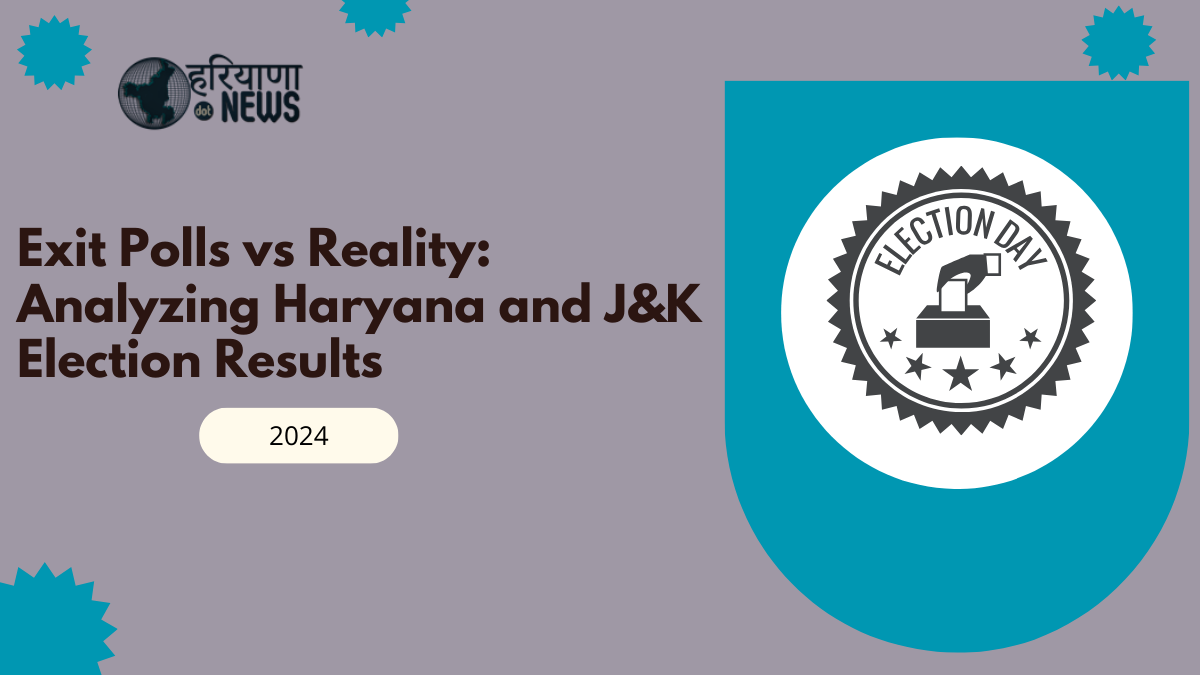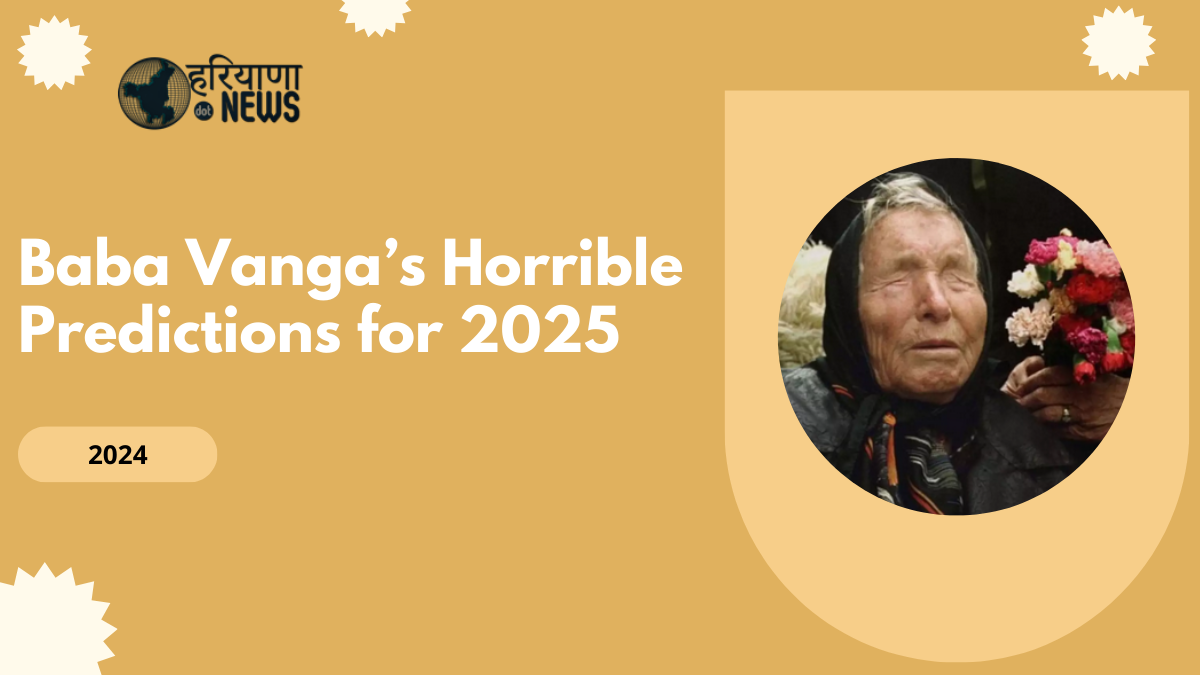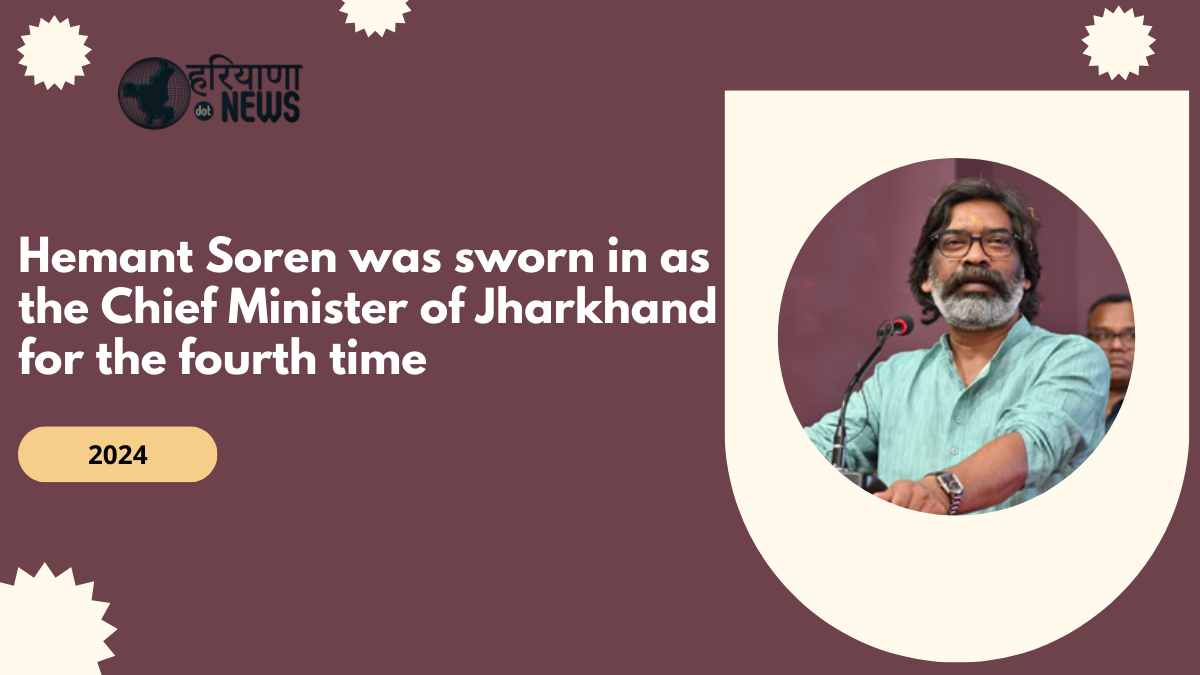The election results in Haryana have taken a surprising turn, deviating significantly from the exit poll predictions. Election seasons often bring with them a flurry of forecasts, with exit polls playing a crucial role in shaping public expectations. These polls aim to offer a sneak peek into voter behaviour and give a sense of which political party might emerge victorious. However, the accuracy of these exit polls has often been called into question.
The recent election results in Haryana and Jammu & Kashmir have once again highlighted this issue, with the final outcomes deviating, sometimes drastically, from what the exit polls had predicted. This article takes a closer look at how the actual results compared to the exit poll forecasts and the broader implications of these discrepancies.
Haryana Results Defy Exit Poll Expectations
Following the Lok Sabha elections, Haryana’s assembly election results once again cast doubt on the accuracy of exit polls. Despite predictions that the Congress would have an easy victory, the ruling Bharatiya Janata Party (BJP) emerged as the clear winner, securing 48 out of the 90 assembly seats. In comparison, the Congress managed to win just 37 seats.
BJP Retains Power Despite Anti-Incumbency
Contrary to expectations of anti-incumbency working against them, the BJP not only retained power in Haryana but also halted Congress’s efforts to make a comeback. The party’s performance exceeded expectations, even surpassing its breakthrough win in 2014, when the BJP first formed a government in the state independently.
Jammu & Kashmir: Exit Polls More Accurate
In Jammu and Kashmir, exit polls were closer to the actual results. Polls had suggested that the Congress-National Conference (NC) alliance would have an advantage, and indeed, the coalition emerged victorious, capturing a combined total of 48 seats. The NC emerged as the largest single party with 42 seats, while its ally, Congress, secured 6.
Detailed Breakup of Jammu & Kashmir Results
The BJP secured 29 seats in Jammu and Kashmir, while the People’s Democratic Party (PDP) managed to win just 3 seats. Additionally, other parties like the Jammu and Kashmir People’s Conference, Communist Party of India (Marxist), and Aam Aadmi Party each won a single seat. Independent candidates played a notable role, bagging seven seats.
In the Kashmir region specifically, the National Conference made significant gains, increasing its seats from 15 in 2014 to 42 by 2024. Meanwhile, Congress saw its number of MLAs shrink, falling from 12 seats in 2014 to just 7 seats in 2024.
What Were the Exit Polls Predicting?
Haryana
Various exit polls had painted a very different picture of the Haryana elections:
 When Will Maharashtra’s New Chief Minister Be Declared? BJP Emphasizes Patience Over Haste
When Will Maharashtra’s New Chief Minister Be Declared? BJP Emphasizes Patience Over Haste
 Maharashtra Assembly Election: Key Constituencies and Crucial Battles Among 288 Seats
Maharashtra Assembly Election: Key Constituencies and Crucial Battles Among 288 Seats
 Delhi’s Toxic Air Crisis: Equivalent to Smoking 49 Cigarettes Daily
Delhi’s Toxic Air Crisis: Equivalent to Smoking 49 Cigarettes Daily
 Kailash Gahlot Joins BJP Following Departure from AAP and Delhi Cabinet
Kailash Gahlot Joins BJP Following Departure from AAP and Delhi Cabinet
 PM Modi Criticizes Opposition in Maharashtra, Highlights Stance on Maratha Pride and Development
PM Modi Criticizes Opposition in Maharashtra, Highlights Stance on Maratha Pride and Development





- C-Voter-India Today polls predicted that Congress would win between 50 and 58 seats, while BJP was expected to secure 20 to 28 seats.
- Republic Bharat-Matrize Polls were even more favorable to Congress, predicting 55 to 62 seats, with BJP likely to win between 18 and 24 seats.
Jammu & Kashmir
For Jammu and Kashmir, the predictions were somewhat more accurate:
- C-Voter-India Today estimated the NC-Congress alliance would win between 40 and 48 seats, while the BJP was predicted to secure 27 to 32 seats.
- Peoples’ Pulse Exit Poll gave Congress 49-60 seats and BJP 20-32 in Haryana. For Jammu and Kashmir, the poll forecasts the NC-Congress alliance to win 46-50 seats compared to the BJP’s 23-27.
- Republic-Gulistan Poll projected the NC-Congress alliance to win between 31 and 36 seats, with the BJP winning 28 to 30.
Other Predictions
- Dainik Bhaskar estimated Congress would get 44-54 seats, with BJP at 15-29 in Haryana. For Jammu and Kashmir, it forecast the NC-Congress alliance to secure 35-40 seats, and the BJP to win 20-25 seats.
- Axis My India Polls gave the NC-Congress alliance a projection of 35-45 seats, while BJP was expected to win 24-34 seats. Other smaller parties were estimated to win 4-10 seats.
Human Touch on Exit Poll Accuracy
These exit polls, although widely discussed and analyzed, highlight the inherent uncertainty in predicting elections. The public’s shifting sentiments and complex political landscapes make it challenging to provide accurate forecasts. While exit polls offer a glimpse into voter behaviour, they are not always able to capture last-minute swings or regional variances. As seen in Haryana, even well-established polling agencies can miss the mark, underscoring the dynamic nature of democracy.
In Jammu and Kashmir, where the predictions were closer to the actual outcome, the alliance between NC and Congress resonated well with voters, validating the exit polls to some extent. However, even here, the exact numbers were not entirely on point, emphasizing that while exit polls offer insights, they are far from infallible.
Conclusion: A Reality Check for Exit Polls
The election results in Haryana and Jammu & Kashmir remind us that exit polls, despite their influence, are not always definitive. The political landscape is complex, and predicting outcomes with precision remains challenging. As seen in these elections, actual results can diverge significantly from predictions, reinforcing the need for caution when interpreting exit poll data.
Click Here To Know More.






